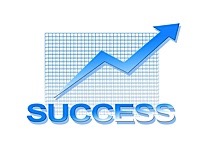
August 5, 2011—Agriculture and agriculture biosciences —agbioscience— are key to economic growth, job creation and quality of life in the North Central United States, according to a new study from Battelle.
In Power and Promise: Agbioscience in the North Central United States, Battelle researchers found agbioscience professionals at U.S. land-grant universities are leveraging advancements in modern science and technology to address crucial national and global needs, including agricultural productivity and food security, improved human health, renewable resource development (such as bio-energy and bio-based materials) and environmental sustainability.
“In our science and technology-based economic development practice at Battelle, we have observed the consistent rise of agbioscience as a core driver of economic growth and business expansion opportunities for the U.S.,” said Simon Tripp, lead author of the study, who will present an overview of the report at the A۰P۰L۰U Annual Meeting in November. “This is an extremely dynamic sector, leveraging sustainable bio-based resources to produce goods that meet large-scale market needs.”















![Money.png One of the questions this bill expects to answer is how much of the money spent by Washington on R&D would come back to the federal government if there were a royalty system. [© kentoh - Fotolia.com]](/images/stories/2011/Money734873301-20110811233238.png)


